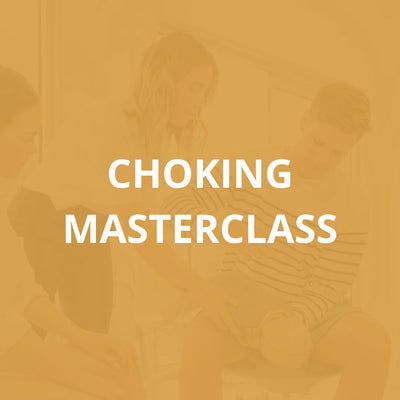How to prevent burns around the home (ultimate checklist)
Did you know 79% of burns in children occur in the home environment?
Burns in little ones can be mild, moderate or severe. There are number of ways that babies and children can burn themselves around the home. This could be a contact burn from the oven or a severe scald burn from pulling a pot of boiling water onto themselves.
Burns are one of the most common causes of injury in young children, particularly in toddlers with 33% of paediatric burns cases aged between 12-24 months. Kids are quick and inquisitive, but the majority of household burns are preventable. The key is supervision and creating the safest environment you can.
We have created a list for you to take a few minutes to check your home and outdoor environment to ensure your little ones are as safe as possible.
Here is how we can prevent burns in and around the house.
In the kitchen:
50% of burns in kids occur in the kitchen.
Keep children’s play area away from the kitchen
Try to not leave the kitchen unattended when you are cooking or bring your child with you if you need to leave it.
Use back burners of the stove and face pot handles towards the back. Install a guard around the hot plates of the stove if possible.
Make sure appliance cords don’t hang down within reach of little hands. Kids are fast (this includes hair straighteners)
There are cool-to-touch ovens and heaters on the market now if you are upgrading.
Lock matches and lighters away. Store poisons up high in a locked cupboard. This includes dishwashing detergent and dishwasher tablets.
Keep hot cups of tea and coffee out of reach. Pulling hot liquid down onto themselves is a very common cause of injury, which can result in serious burns to face, neck, check and shoulders.
Living and family areas
Securely attach guards to fireplaces and around heaters
Keep clothes, toys, curtains and other flammable items at least one Metre from heaters and fires.
Use placemats instead of table clothes to prevent children pulling down hot food or drink onto themselves.
Set up and use treadmills away from children. They cause terrible friction burns.
Bathroom
Always test bath and shower water before letting your child in.
Fill the bath with cold water, then add hot.
Get a licensed plumber to set the temperature of your water in basins, baths and showers to not exceed 50*C.
Bedroom
Buy children loose fitting and low fire danger PJs
Try to keep bedside lamps and light bulbs out of reach until your child is old enough to learn that they burn
Turn off heaters in rooms once children are in bed. Once children are old enough to get out of bed, remove heaters from the room. For colder nights dress children in warm clothes or add an extra blanket
Avoid using electric blankets in children’s beds. Your child might be at risk of electrocution if they wet the bed. Babies and small children can overheat, and electric blankets can catch fire if set to high or forgotten to be turned off.
Avoid using hot water bottles or heat packs for children or babies.
Outside the house
Brace or support gas heaters so they don’t fall
Supervise children around lit BBQs, even when cooling down
Supervise children around campfires and be aware that embers and ashes can stay hot for up to 8 hours, even after being buried under dirt or sand
Lock away tools like blow torches and soldering irons. Lawnmowers can stay hot for several minutes after use. Be aware of where you put them
Check seat belt buckles on hot days.
Basic burns first aid
Unfortunately we can try to prevent burns around the house, however children are quick and inquisitive.
If your child does sustain a burn injury ensure the child and you are safe from further injury, remove watches, or jewellery around the burn if they are not stuck to the burn. Leave all blisters alone.
Run the burn under cool water for 20 minutes.
If your child is distressed or getting cold you can do this for a few minutes at a time, making sure it is in the first 3 hours after the burn. Keep your child warm in the process; we don’t want to cause hypothermia.
Once cooled, cover the burn with a loose, light non-stick dressing like plastic wrap and raise burnt limbs to decrease pain and swelling. Do not keep plastic film on for over an hour. Your doctor may apply a dressing.
Call an ambulance on 000 if the burn is to your child’s face, airway, hands or genitals or if the burn is larger than their hand.
See your GP or hospital if the burn is the size of a 20-cent piece or larger, or if it is deep, angry and raw looking with blisters. If you’re not sure how bad the burn is or your child pain persists or is severe, seek medical help
Burn myths- what not to do:
There are many myths and old wives tales of how to treat burns. Please don’t put butter, flour, oils, toothpaste, potato, egg whites or baby powder on any burns, these items can hold in the heat and make it more painful and increase the severity of the burn. Also do not put ice or ice water or lotions on a burn.
Cool running water for 20 minutes is the main treatment for a burn.
Majority of household burns are preventable. Take a little time to look around your home to try and make it as safe as possible for your little ones.
Check out these quick thinking parents who helped their son to avoid life long scars after he pulled a hot drink over his torso.
These two parents were educated in first aid and had recently completed one of our infant and child first aid courses. If you haven't completed a first aid course recently, take this as your sign to book in now.
Written by Laura, a Paediatric Emergency Nurse and mum of two little loves. As always, information on this website is for educational purposes only.
Please consult your GP for information specific to your child.
References
Raisingchildren.net.au
Kidssafevic.com.au
https://www.rch.org.au
The quick thinking of Warrnambool parents Lucy and Pat Mahony saved their 18-month-old son Ollie from serious scars for life after he pulled a cup of coffee onto himself.
How do I check my baby’s temperature? 🤒 What is the best way to check a baby’s temperature? There are so many different types and brands of thermometers out there. What thermometer should I buy?
We're here to answer all your questions!
When our little loves are in pain, we want nothing more than to help them. This guide discusses common pain reliving medications that we can use to help alleviate their pain, as well as when and why we use them.









